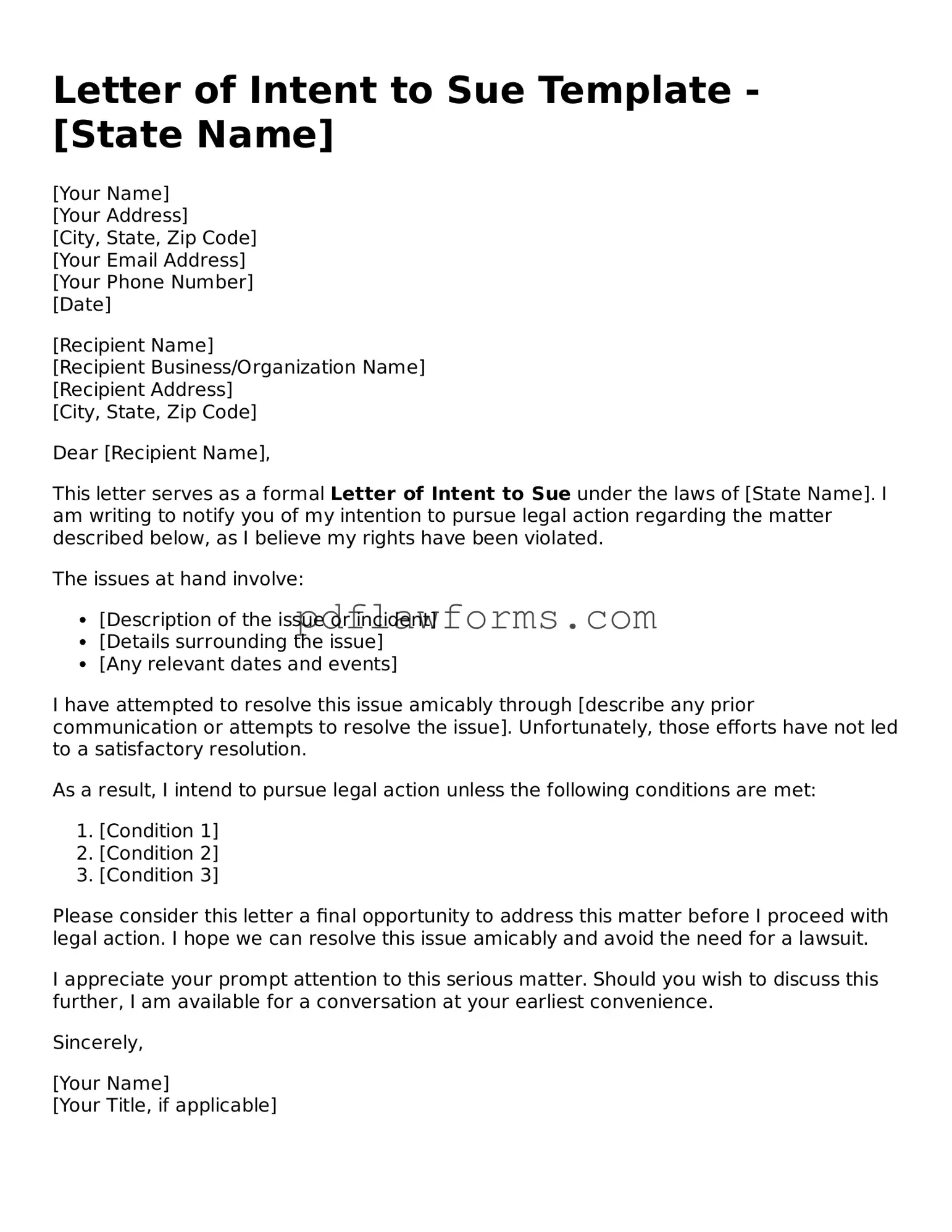Filling out a Letter of Intent to Sue form can be a critical step in the legal process. However, individuals often make mistakes that can hinder their claims or lead to delays. One common mistake is failing to provide complete contact information. Accurate details are essential for the court and all parties involved to communicate effectively. Missing or incorrect information can result in confusion or miscommunication.
Another frequent error is not clearly stating the basis for the claim. A vague description can leave the reader unsure of the legal grounds for the intended lawsuit. Specificity is crucial. Providing detailed information about the events leading to the dispute helps establish a solid foundation for the claim.
Many people also overlook the importance of including all relevant dates. Dates of incidents, communications, or agreements play a significant role in establishing timelines. Omitting these details can weaken the case and make it difficult to assess the situation accurately.
In addition, some individuals fail to sign the form. A signature is often required to validate the document. Without it, the form may be considered incomplete and could be rejected by the court.
Another mistake involves not including supporting documents. Relevant evidence, such as contracts, emails, or photographs, can strengthen a claim. When these documents are absent, it may be challenging to support the assertions made in the letter.
People sometimes neglect to review the form for errors before submission. Typos or incorrect information can lead to misunderstandings or delays. A careful review can catch these mistakes and ensure the form is accurate.
Additionally, some individuals may not follow the specific instructions provided for the form. Each jurisdiction may have different requirements. Ignoring these guidelines can result in the form being rejected or delayed.
Lastly, failing to keep a copy of the submitted form is a mistake that can have consequences. Retaining a copy ensures that there is a record of what was submitted, which can be useful for future reference or if any issues arise later in the process.
